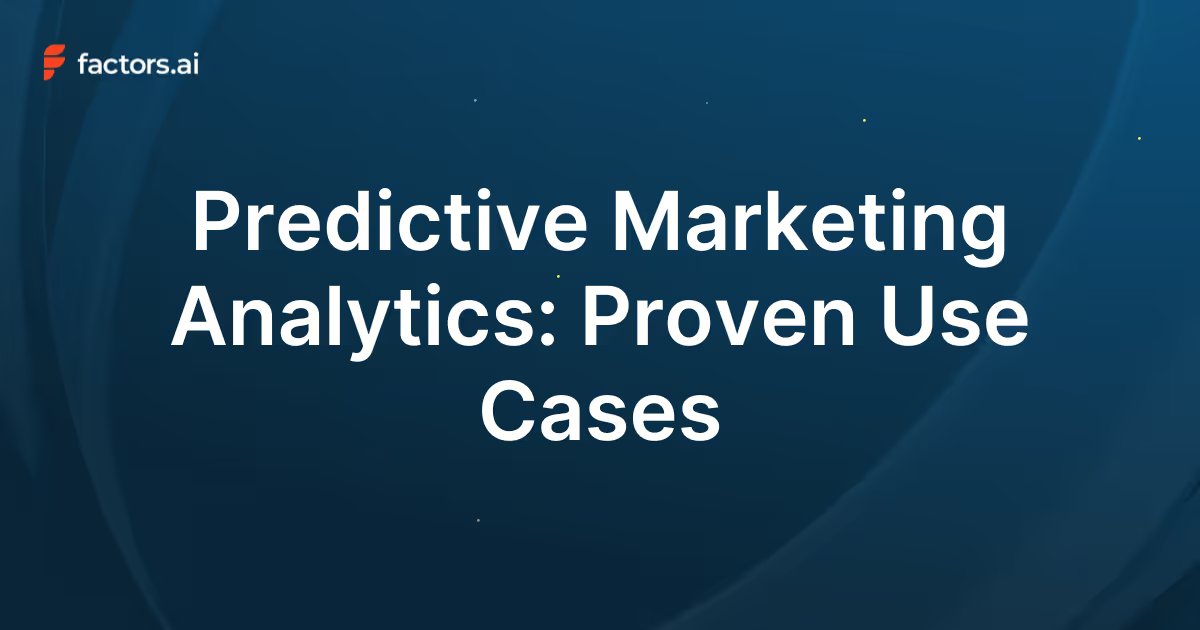What Kinds of Analyses Should D2C Brands Perform?
Stay ahead in the highly competitive D2C industry by performing the right analyses to identify user journey. Learn different analyses for D2C brands here.
As an organization, in any industry, it's important to understand the audience behavior on websites and what gets them to convert or drop-off. These insights help optimize website content and improve its overall effectiveness.
The D2C (Direct-to-Consumer) industry is no exception. With tens of thousands of visitors logging sessions each day, knowing what exactly they do on the website, what pages they visit and what influences them to convert is crucial. But how do you go about doing this?
Let’s dive into the kinds of analyses that can be performed to truly understand the user journey on a D2C website.
Page Funnels:
For this, let’s consider a common buying process seen on D2C websites:
- Select the items to purchase
- Visit ‘Cart’ to review items and proceed to ‘Checkout’
- Complete payment on the ‘Checkout’ page
- On successful payment, the order is placed
While this seems to be a fairly straightforward process, there is a lot that goes on behind it. Here are the questions that you need to ask:
- What pages do users visit before they reach the checkout page?
- How much time does it take for users to place their order after reaching the checkout page?
- What pages do users visit before they place their order?
- What pages accelerate the buying process?
- What pages do users visit based on the marketing campaign they came from?
The answers to these questions will help you understand the success and failure paths on your website. For example, you might see a huge percentage of users visiting the ‘Reviews’ section right before checkout indicating the need for validation. Hence you must highlight the ‘Reviews’ section clearly.
Another insight would be users from, let’s say, an Instagram campaign tend to follow a particular path before placing an order. This can then be used to tweak ad communication and landing pages for the campaign to improve CTRs and possibly conversion rates.
Measurement of Experiments:
Experiments are a key part of any marketing activity whether it’s changing website banners, re-positioning items, highlighting content, or simply changing colors.
However without a measurement framework, you will never know the true impact of an experiment. Performing such analyses is necessary to measure the outcome of an experiment.
Let’s say you have recently changed the home page banner and re-positioned a page link from the footer to the top. The questions that you should be asking here are:
- What has been the impact on the conversion funnel after changing the banner?
- Are users spending more time on the website after re-positioning the page link?
- Is the re-positioned page link playing a crucial role in the conversion funnel? And so on.
This will help you know what experiments should be scaled and the ones that should be halted.
User Attributes and Behaviors:
Understanding how different types of users behave on the website helps personalize content and optimize marketing campaigns.
For example, you observe that new website visitors from Mumbai tend to spend more time on one of your blog pages than any other. Or, visitors who use an iPhone have a 30% higher funnel entry rate than other visitors using other devices. As an actionable, you would promote the blog in campaigns running in Mumbai and increase bids/budgets when a user using an iPhone is searching for your product.
Similarly, uncovering other such insights can go a long way towards amplifying your marketing ROI.
Multi-Touch Attribution:
Knowing how different marketing touchpoints play a role in a user journey is crucial especially when it's time to scale marketing campaigns.
The questions that you should ask here are:
- How do I know if my Facebook/YouTube/Google campaigns are working?
- How do different keywords affect the conversion funnel?
- Is everything being attributed to ‘Brand’ campaigns? If yes, how do I know the influence of other campaigns?
- What would the scenario look like if I were to change the attribution model (for example from last touch to linear touch)
The answers to these questions will help you understand the impact of marketing touchpoints and their cost effectiveness.
Asking yourself the right questions and being equipped with the right tools will help you uncover hidden insights with the data you always had.
Factors.AI helps you get critical insights into marketing activities and decoding customer behaviors.
Understanding audience behavior on websites is key to improving conversion rates. By analyzing user journeys, brands can identify what drives conversions or causes drop-offs, helping to refine content and enhance user experience.
Key Analyses for D2C Brands:
1. Page Funnels: Analyzing the path users take before completing a purchase helps identify successful and problematic pages. This guides improvements in website design and content placement.
2. Measurement of Experiments: Implementing a framework to measure the impact of website changes (e.g., banner modifications) helps assess their effectiveness in boosting conversions.
3. User Attributes and Behaviors: Analyzing user demographics and interactions enables personalized content and targeted marketing strategies.
Mixed Gating Strategy: Using both gated and ungated content based on user intent ensures a balance between accessibility and lead generation, enhancing SEO while capturing high-quality leads.
Optimizing Pricing and Offers: Adjusting pricing based on platforms (e.g., Facebook vs. LinkedIn) and emphasizing clear event details can cater to varying user intents and improve conversion rates.
By performing these analyses, D2C brands can optimize their website content, enhance user engagement, and increase conversions with data-driven insights, further supported by tools like Factors.ai.
See how Factors can 2x your ROI
Boost your LinkedIn ROI in no time using data-driven insights


See Factors in action.
Schedule a personalized demo or sign up to get started for free
LinkedIn Marketing Partner
GDPR & SOC2 Type II
.svg)







.avif)
.avif)

